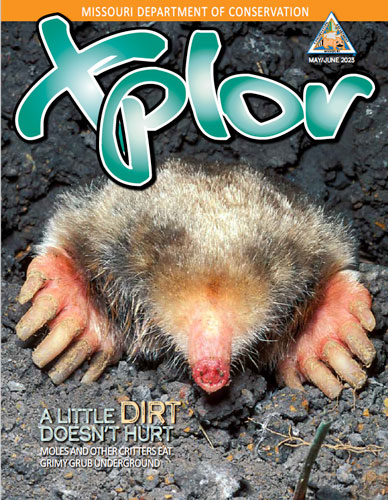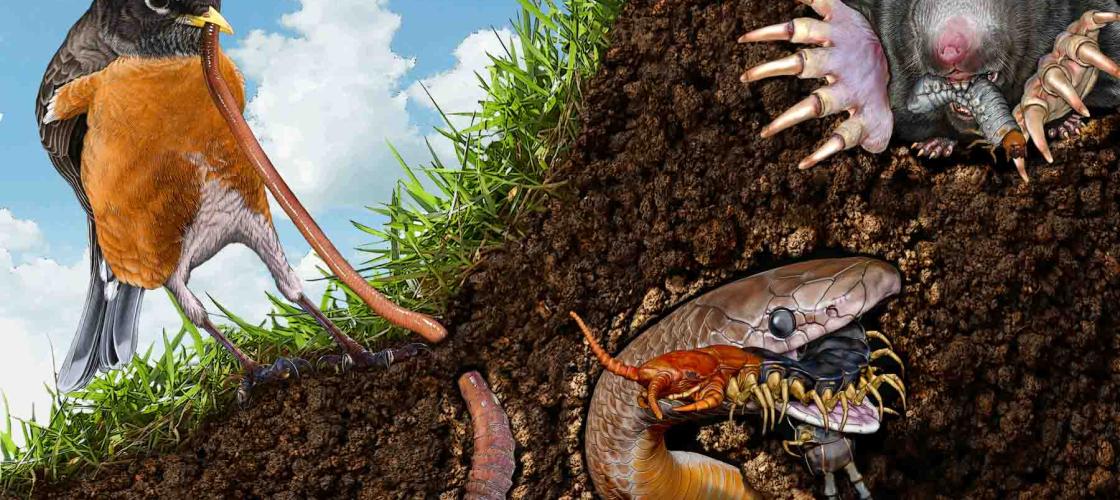
Soiled Spaghetti
An American robin hops quickly across the grass, stopping often to cock its head to look and listen. When it spies an earthworm at the surface, a tug of war begins! If the worm loses, it becomes the bird’s breakfast. Though the robin usually wins, it’s not entirely a one-sided fight. Stiff hairs, called setae (see-tee), circle each segment of the worm’s wiggly body. The bristles anchor the earth-eater in place, making it tough to tug it out of the ground.
Grimy Grub
An eastern mole couldn’t see dirt if it were buried in it. The tiny tunneler’s eyes are sealed shut and covered with fur. But who needs sight when you’re always in the dark? Instead, a mole uses its oversized front paws to claw through the earth with a swimming motion. While it digs, its pointy snout wiggles about, sniffing and feeling for food. Creepy-crawlies that cross its path — like this May beetle grub — soon become snacks.
Lots o’ Legs
Crunch! A flat-headed snake takes a bite out of a giant red-headed centipede. Missouri’s smallest snake rarely grows longer than 8 inches. It lives on sunny glades in the Ozarks, hunting under rocks and in loose soil for scorpions, spiders, and centipedes. This particular snake, however, may have bitten off more than it can chew! Red-headed centipedes have big fangs and strong venom, which they use to capture insects, baby mice, and small snakes. This snake better eat quickly!
Lunch on the Run
This white-footed mouse better run faster! There’s a hungry weasel hot on its tail. Barely bigger than a bratwurst, a least weasel is the world’s smallest meat-munching mammal. But don’t let its tiny size fool you. Ounce for ounce, it bites harder than any of Missouri’s other furry critters. The pint-sized predator’s skinny body is perfectly shaped for pursuing prey in tight spaces. It can even squeeze through holes less than 1 inch wide.
Slithery Snack
When threatened, a prairie ring-necked snake curls its tail into a corkscrew and shows off its reddish-orange underside. The bright tail is a decoy, used to lure predators away from the snake’s helpless head. But the trick probably won’t work on a hungry short-tailed shrew. About as long as your pinkie, this tiny mammal produces venomous spit that paralyzes small prey like insects and slows the
heart of larger victims like small snakes.
Poached Eggs
A few hours ago, a sizable snapping turtle crawled out of its mucky marsh, lumbered across the land, and dug a hole. Inside, the mama turtle laid several dozen leathery eggs. But the scent of disturbed dirt has given away her buried treasure. A masked bandit followed its nose to the nest and is now enjoying an eggcellent feast. Raccoons, skunks, and other egg-eaters can be a huge problem for turtles. In some areas, they gobble up eight out of ten nests.
Some creatures dine where the sun doesn’t shine. Here’s what’s on the menu.
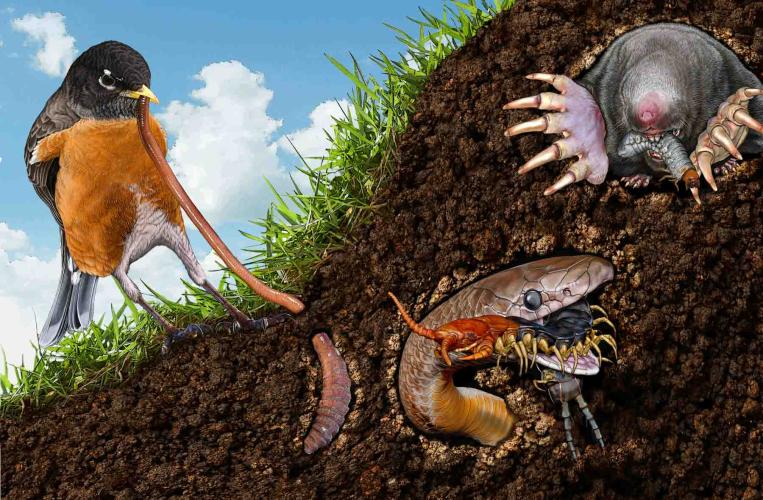
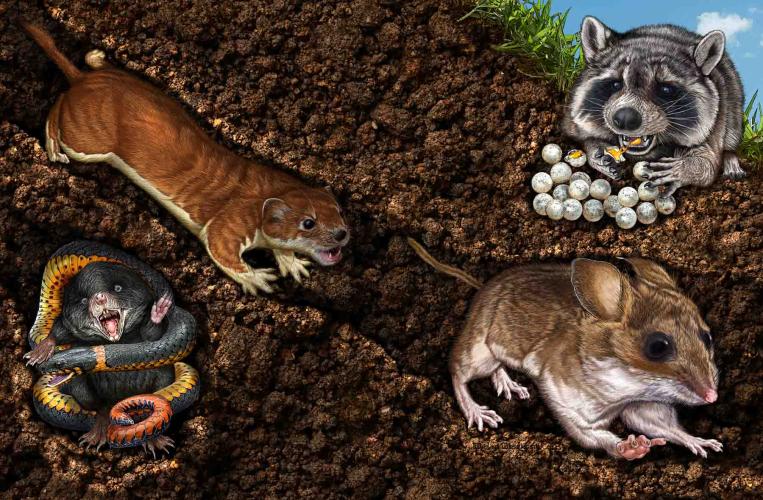
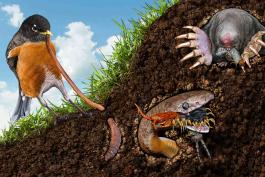
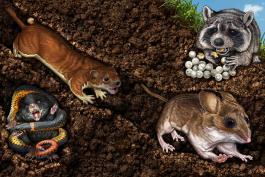
Also In This Issue
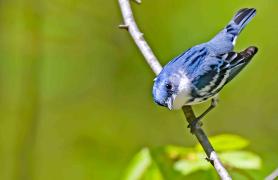
Join a spunky little bird on an epic adventure.
And More...
This Issue's Staff
Photographer – David Stonner
Designer – Marci Porter
Designer – Les Fortenberry
Art Director – Cliff White
Editor – Matt Seek
Subscriptions – Laura Scheuler
Magazine Manager – Stephanie Thurber






















